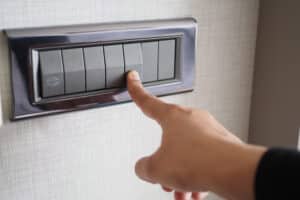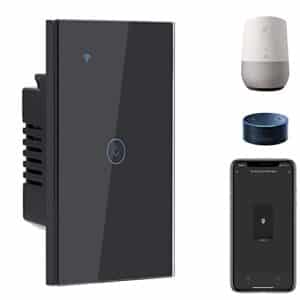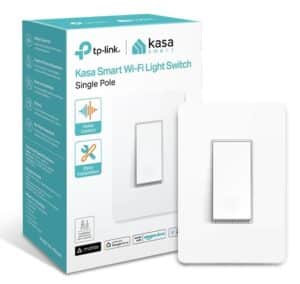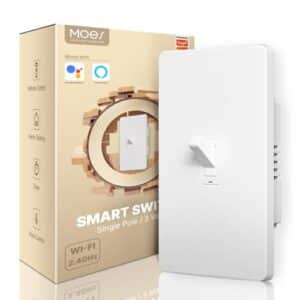Does Light Switch Need To Be On For Smart Bulbs?
Key Takeaways
- Smart bulbs require constant power to maintain functionality
- There are alternative methods to control smart bulbs without relying on the light switch
- Leaving the light switch on has advantages such as convenience, seamless integration, and preserving automation, but it also has disadvantages such as increased power consumption and the possibility of accidental switch-offs
Smart bulbs have gained popularity in recent years due to their convenience and energy-saving features. They offer the ability to control lighting remotely through apps, voice commands, or smart home hubs. However, a common question that arises is whether the light switch needs to be on for smart bulbs to function properly. In this article, we will explore various viewpoints and provide a comprehensive answer to this question.
The Need for Constant Power
According to several sources, including Smarthomepoint.com and The New York Times, smart bulbs do require constant power to maintain their functionality. This means that if the light switch is turned off, the smart bulbs will lose power and become unresponsive. Therefore, in order to enjoy the full benefits of smart bulbs, the light switch should be left on.
Controlling Smart Bulbs Without the Light Switch
While the majority of sources suggest keeping the light switch on for smart bulbs, there are alternative methods to control them without relying on the switch. The Shelly Plus 1 UL smart switch, as mentioned in The Smart Cave, allows for controlling smart bulbs while keeping the existing switch in the on position. This enables smart bulb control without cutting power to them. Additionally, as highlighted by Our Smarter Home, smart bulbs can be controlled through various other means such as smartphone apps, voice commands, or integrated with a smart home hub.
Pros and Cons of Leaving the Light Switch On
Leaving the light switch on for smart bulbs has its advantages and disadvantages. Here are a few points to consider:
Advantages:
- Convenience: By leaving the light switch on, you can easily control the smart bulbs using any of the available methods (app, voice commands, etc.) without the need to physically interact with the switch.
- Seamless Integration: Smart bulbs are designed to work optimally when receiving continuous power. Keeping the switch on ensures that the bulbs are always ready to respond to commands.
- Preserving Automation: If you have set up automation routines or schedules for your smart bulbs, leaving the switch on is essential for them to function as intended.
Disadvantages:
- Power Consumption: Smart bulbs, even in their idle state, consume a small amount of power. Leaving the light switch on for extended periods may result in a slight increase in energy usage.
- Accidental Switch Off: There is a possibility that someone might accidentally turn off the light switch, rendering the smart bulbs unresponsive until the switch is turned back on.
Conclusion
Based on the information gathered, it is clear that smart bulbs generally require the light switch to be on in order to receive constant power and maintain their functionality. While there are alternative methods to control smart bulbs without relying on the switch, such as the Shelly Plus 1 UL smart switch or using smartphone apps, leaving the switch on ensures seamless integration and preserves automation features. However, it is important to consider the slight increase in power consumption and the possibility of accidental switch-offs.
Related Websites:
FAQs:
Q: What are the benefits of using smart light bulbs?
Smart light bulbs offer convenience and control. They can be operated remotely through smartphone apps or voice assistants, allowing you to turn them on/off, adjust brightness, and even change colors from anywhere. They also provide energy efficiency by allowing you to schedule their operation and dimming capabilities.
Q: How do smart light bulbs work?
Smart light bulbs use wireless communication protocols, such as Wi-Fi or Bluetooth, to connect to your home network. They can then be controlled through dedicated smartphone apps or voice assistants, which send commands to the bulbs to change settings or turn them on/off.
Q: Can I control smart bulbs without a light switch?
Yes, smart bulbs can be controlled without a light switch. They are designed to be operated through smartphone apps or voice assistants, eliminating the need for manual switches. This provides convenience and flexibility in controlling your lighting.
Q: Should I leave the light switch on for smart bulbs?
It is recommended to keep the light switch on if you want to fully utilize the functionality of smart bulbs. By leaving the switch on, you ensure uninterrupted power supply to the bulbs, allowing them to be controlled remotely at all times. It also serves as a backup option in case of connectivity issues.
Q: How can I control smart bulbs?
Smart bulbs can be controlled through dedicated smart home hubs or voice assistants, such as Amazon Alexa or Google Assistant. These devices act as central control points, allowing you to operate multiple smart bulbs simultaneously, create schedules, and even integrate with other smart devices in your home.






